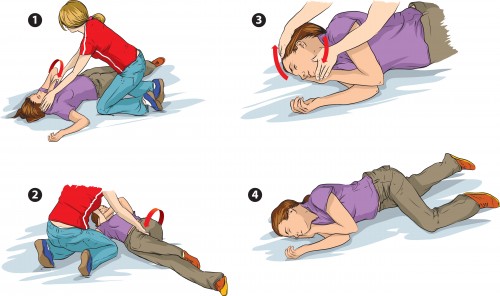The disease epilepsy is often found in childhood. It is either a symptom of some organic brain lesion (symptomatic epilepsy), or it develops without any noticeable pathological process in the brain (genuine epilepsy).
Symptomatic epilepsy is a consequence of intracranial hemorrhages caused, for example, by birth trauma, occurs after encephalitis, with main dropsy, with brain swelling, with cysts and abscesses, accompanies spastic infantile paralysis, and the like. Epileptiform seizures, which begin in the neonatal period and in the first months of a child's life, always have an organic cause. And in the later period of early childhood, the cause of epileptiform seizures, if they cannot be explained by spasm, is usually an organic disease of the brain.
Genuin epilepsy begins in children after 5 years of age. Of the various forms of genuine epilepsy, the most characteristic is a grand mal epileptic seizure. After a short period of aura (pain under the spoon, nausea, etc.), the child turns pale and collapses in a fainting state. For a short period of time, the whole body tenses in a strong tonic cramp, followed by general clonic convulsions, during which the patient often bites his tongue, foams appears from the mouth, the pupils are dilated, do not react to light, the face is pale, cyanotic.
A seizure that lasts up to three minutes is followed by a deep long-term sleep, after which the child remains depressed and broken for some time.
Another form of epilepsy that is common is small seizures, which manifest themselves in the fact that the patient suddenly loses consciousness and falls. Another form of seizure manifests itself in sudden dizziness or in the so-called absense ("absence" - French - absence): the child turns pale, the pupils dilate, the gaze loses its meaningfulness directed into space; The child stops for a moment in the middle of the phrase, releases the thing he is holding in his hands. The seizure passes in a moment, and the child either falls asleep or continues to do what he did before the seizure.
Sometimes there are several lightning-fast convulsive contractions of individual muscles. Sometimes there are a lot of such small seizures - up to 30-40 per day. Sometimes epileptic seizures occur in the form of so-called salaam seizures: the child makes several quick nodding movements of the head and torso forward, as if greeting someone. It is necessary to recall another form, which is called epilepsia procursiva, in which the child suddenly rushes forward, runs until he bumps into something, and falls in a fainting state or in a fit of general convulsions.
Children can also have "mental equivalents" of epileptic seizures: unreasonable bad mood, fits of wild anger, "twilight state", confusion of thoughts. During the "twilight state", the child can take various unmotivated actions, such as wandering and the like. The child does not remember all these actions after the end of the seizure.
Epilepsy seizures occur either often, or at long intervals (six months or more). Often seizures follow one another without interruption, for a day or more. This is the so-called status epilepticus – a life-threatening condition.
Prolonged and frequent seizures of severe epilepsy have a very adverse effect on the mental abilities and character of the child: there is a decline in mental activity, varying degrees of debility and imbecility, and sometimes it comes to idiocy; The child's character becomes aggressive, there is a tendency to impulsive actions, irritation, cruelty.
The form of epilepsy which is known as Jacksonian epilepsy always has an organic basis: some fiery process in the brain, meningitis, or some fiery residual changes after incendiary processes, traumas, etc.
Seizures in Jacksonian epilepsy are limited: they involve a section of the facial muscles from one side or will affect one half of the body or only one limb. A Jacksonian epilepsy seizure is not always accompanied by loss of consciousness. In some cases, hemiparesis or monoparesis remain after seizures, which quickly pass.



